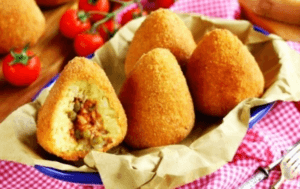What you should eat in Italy when it is Carnival time
Maybe not everybody knows that in a few weeks it will be Carnival. Just to remind what it is, Carnival is a Christian festival. The name means “to take away the meat”, as in the past it was the celebration for the last huge meal just before the period of abstinence and fasting of Lent. This festival is still very popular in Italy, but nowadays it is far less religious related (and surely, we are not here for a history class). Today, Carnival means masks, parades and other public street parties, and certainly food.
Our ancestors had to prepare themselves for a (assumed) purification period, and Carnival week was the period when everything was allowed… especially when it comes to eating. That is why even today when Carnival approaches, you can see the bakeries flourishing with everything you should not even look at when you are on diet. Yes, this is going to be not too subtitled invite to visit Italy during the Carnival season, starting from Venice, which is the capital of Carnival.Of course, Venice is internationally known for the beauty of the masks that you can meet all over the city during these days.
But if you are a Venice local, what you wait the most are not these colorful parades but le frittelle (or fritole). They are a lovely dessert similar to beignets, but far less light. It is fried, sugar-covered, and filled with raisins, cream or chocolate…then there are those diabolic bakeries that fill frittelle also with pistachio cream. I guarantee you that a friend of mine waits for the Carnival to halt her diet and go on a bakery tour to try them all every year. You can find very similar Carnival desserts in other Italian regions, the only difference is the name: castagnole, zeppole,(even if in this case the cream is outside), etc.

These are the frittelle made by a historical bakery in Venice, Rosa Salva, founded in 1879. As you can see, they are huge, but their price is something between 1.50€ and 2€.
 Another Carnival dessert that you can find all over Italy are le chiacchiere (or frappe). They look very cheap and cheerful as they are yellow sheets covered by sugar. Be very careful while eating them as they are going to crash after the first bite.
Another Carnival dessert that you can find all over Italy are le chiacchiere (or frappe). They look very cheap and cheerful as they are yellow sheets covered by sugar. Be very careful while eating them as they are going to crash after the first bite.
If you are still not sure that you want to go during the Carnival period to Italy, I can give you other reasons such as the arancini that means little oranges. No, they do not look at all like fruits, and oranges represent around 1% of the whole recipe. They are little caramelized roses prepared during this period in the central Italy. But a warning:
On the left, they are Sicilians arancini (or arancine) and on the right are Carnival arancini. If you want to survive during your trip, you reader should remember it. <3


Last but not least among the traditional Carnival sweets, there is the cicerchiata. It usually looks like a crown and is made of little balls kept together by honey.

Most of these recipes have very ancient origins. For example, frittelle were mentioned in a comedy played in the 1700s, and the cicerchiata dates back to the 15th century. They evolved but still represent an important part of the Carnival tradition, especially for kids.
… but do not worry! If you want to try to be in shape, they have begun cooking them in the oven too, not only fried!
Agnese MAZZA, MSc. International Luxury Industries Marketing and Management, Class of 2020



